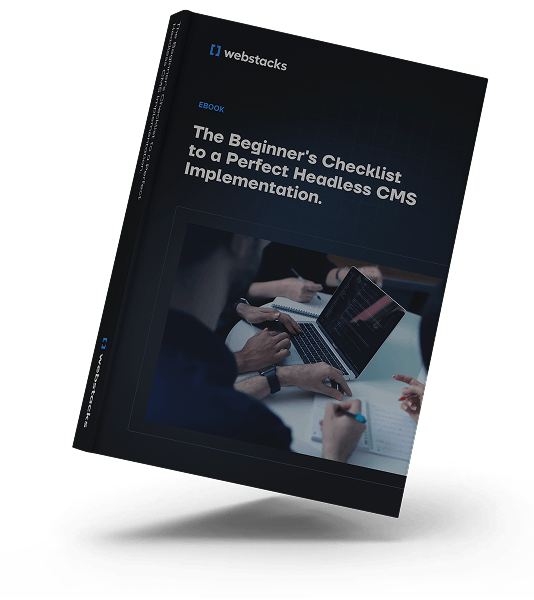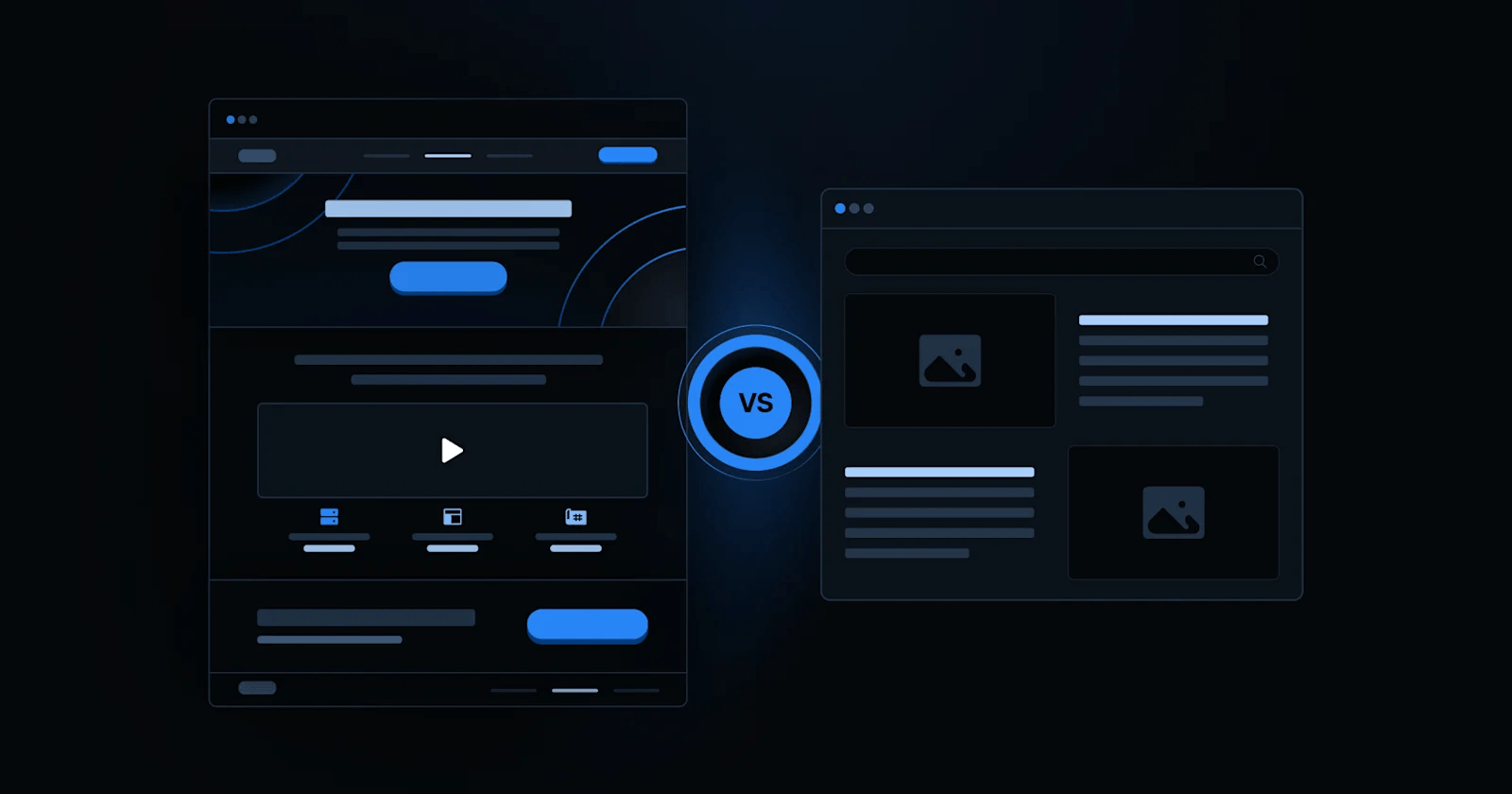Enterprises that are looking for a new content management system (CMS) can find numerous alternatives to Contentful. Whether you need improved functionality, cost savings, or a platform that integrates seamlessly with your existing tech stack, there are options available. In this article, we'll help you discover which CMS might be the perfect fit for your organization.
In brief:
- Multiple CMS alternatives (like Contentstack) offer unique advantages for enterprise-level needs.
- Options range from enterprise-grade platforms to open-source solutions, each with distinct features.
- Evaluating technical capabilities, team resources, and budget constraints will guide you to the right choice.

Top Contentful Alternatives
When considering alternatives to Contentful, several powerful contenders offer unique advantages for enterprise needs. After exploring various enterprise CMS options, we've compiled a detailed analysis of the strongest alternatives in the market:
Contentstack
Contentstack stands out as the premier enterprise-grade alternative, particularly for organizations with complex content requirements.
Key Features:
- Modular content blocks for complex content structures
- Advanced rich-text editing capabilities
- Real-time live preview across platforms
- Integrated automation hubs with one-click integrations
- Multi-cloud capability across AWS, Microsoft Azure, and Google Cloud
Technical Considerations:
The platform received 5 out of 5 for vision, innovation & application architecture in the Forrester Wave™ Digital Experience Platforms report. It's the only composable platform available globally on all three major cloud providers.
Ideal Customer:
Large enterprises with complex content needs, particularly those requiring robust localization and multi-channel publishing capabilities. LADbible Group successfully implemented Contentstack to cut their editorial time in half.
Pricing Model:
Transparent pricing structure with no hidden costs during renewal.
Strapi
Strapi emerges as the leading open-source headless CMS option, providing developers with exceptional flexibility and customization capabilities.
Key Features:
- Customizable API out of the box
- GraphQL and REST API support
- Built-in authentication and authorization
- Extensive plugin system
- Self-hosted deployment options
Technical Considerations:
Developers can leverage both GraphQL and REST APIs, with support for Node.js and extensive plugin architecture for customization.
Ideal Customer:
Organizations that prioritize development flexibility and want to maintain full control over their infrastructure while keeping costs down.
Pricing Model:
Freemium model with open-source community edition and enterprise version for additional features and support.
Prismic
Prismic differentiates itself through its design-first approach and developer-friendly architecture. For organizations debating between Contentful vs Prismic, understanding the nuances helps you make an informed decision.
Key Features:
- API-based content delivery
- Advanced content scheduling
- Built-in translation support
- File versioning
- Visual content modeling
Technical Considerations:
Focuses on providing maximum design and technology freedom for developers while maintaining an intuitive publishing interface.
Ideal Customer:
Design-conscious organizations that need to maintain brand consistency across multiple digital channels and require powerful content scheduling capabilities.
Pricing Model:
Freemium with tiered pricing based on features and usage.
Sanity
Sanity excels in real-time collaboration and structured content management. For those comparing HubSpot vs Sanity, understanding Sanity's real-time collaboration tools can be a deciding factor.
Key Features:
- Real-time collaboration tools
- Customizable content studio
- Powerful query language (GROQ)
- Advanced asset management
- Structured content approach
Technical Considerations:
Provides a unique approach to content modeling with a powerful query language and real-time capabilities built into the core platform.
Ideal Customer:
Teams requiring extensive collaboration features and those working with structured content across multiple projects and channels.
Pricing Model:
Usage-based pricing model that scales with content and API calls.
DirectUS
DirectUS offers a unique Backend-as-a-Service approach to headless CMS.
Key Features:
- Database-first architecture
- RESTful and GraphQL APIs
- Extensive customization options
- Role-based access control
- Self-hosted capabilities
Technical Considerations:
Can work with existing databases and provides extensive API options for integration with various frontend frameworks.
Ideal Customer:
Organizations that need to integrate with existing databases and require extensive customization options while maintaining control over their infrastructure.
Pricing Model:
Open-source core with enterprise support options available.

Contentful Feature Breakdown
When evaluating Contentful against alternatives, it's important to begin by thoroughly understanding the Contentful CMS. Here's a detailed breakdown of its key features that matter most to technical decision-makers.
Content modeling:
- Visual Modeler for complex structures
- Content type templates
- Field customization
- Reusable content blocks
- Strict governance controls
API capabilities:
- Content Delivery API
- Content Management API
- Content Preview API (CPA)
- Images API
- GraphQL Content API
- User Management API
- SCIM API
Developer tools:
- SDKs for multiple languages (Java, JavaScript, Python, PHP, .NET)
- Next.js starter templates
- Comprehensive documentation
- Active Discord community
Enterprise features:
- ISO 27001 compliance
- SSO (Premium)
- PCI DSS compliance
- Custom roles
- Global CDN (Fastly for JSON, CloudFront)
- Webhook support
Integration ecosystem:
- Extensive marketplace
- App Framework for custom development
- Third-party service connections
- Tasks app for workflow management
Localization:
- Support for 100+ languages
- AI-powered translation
- Multi-region delivery
- 2 locales in free plan
Performance:
- Global CDN infrastructure
- Advanced caching
- API rate limits (potential constraint)
- Real-time content updates
Pricing structure:
- Platform pricing (Basic to Premium)
- Studio (custom pricing)
- Feature limitations on lower tiers
- Premium focus for enterprise features
Remember to also take into account the following technical considerations:
- API Rate Limits: Contentful offers comprehensive API capabilities, but be aware of rate limits that could impact scaling efficiency.
- Content Migration: The platform's unique approach to data modeling can make migrations more complex, requiring careful planning for data mapping.
- Development Complexity: Initial setup requires significant developer resources to properly configure data models and integrate with front-end systems.
- Security and Compliance: Enterprise-grade security features are available but primarily in premium tiers, including SSO and PCI DSS compliance.
- Integration Architecture: The platform supports composable architecture through its API-first approach and extensive integration capabilities, making it suitable for complex technical ecosystems.
How to Choose the Right Contentful Alternative
Here's a framework to help you make an informed decision around your CMS:
Technical Requirements Assessment
Understanding the differences between headless vs traditional CMS can help in mapping your technical needs against platform capabilities.
Map your technical needs against platform capabilities:
- API Requirements: Determine whether you need REST, GraphQL, or both.
- Content Delivery Infrastructure: Consider CDN coverage and caching mechanisms.
- Integration Needs: Evaluate compatibility with your existing tech stack.
- Performance Requirements: Assess the platform's ability to handle your use case.
For example, if you're building a global application requiring fast content delivery, prioritize platforms with robust CDN infrastructure similar to Contentful's global distribution network.
Team Capabilities and Resources
Evaluate your team's technical expertise and size:
- Teams with strong development capabilities may prefer platforms offering extensive customization.
- If you have more content creators than developers, consider user-friendly alternatives with visual editing capabilities.
- Assess the quality of documentation and community support available.
The platform's learning curve is crucial. Some alternatives might offer powerful features but could require significant training investment for non-technical team members.
Budget and Scalability Considerations
Consider both immediate and long-term costs:
- Open-source options can help with budget constraints, but account for hosting and maintenance costs.
- Evaluate pricing models (usage-based vs. flat-rate).
- Factor in potential growth and how pricing scales with content volume and user base.
Evaluating platforms like Contentful vs Webflow can help understand different pricing models and scalability options.
For enterprise-scale operations, ensure the platform can handle high content throughput and traffic spikes without significant performance degradation.
Integration Requirements
Align your integration needs with platform capabilities:
- Assess API flexibility and customization options.
- Check compatibility with your frontend frameworks.
- Evaluate support for multi-channel content delivery.
- Consider authentication and security requirements.
Final Thoughts on the Top Contentful Alternatives
Choosing the right content management system impacts your organization's digital strategy.
While there are many alternatives to Contentful, the optimal choice depends on your unique requirements, technical infrastructure, and long-term goals.
At Webstacks, we've seen firsthand how a carefully selected CMS elevates our clients' digital presence and operational efficiency. So, carefully evaluate each option's capabilities, scalability, and integration potential with your existing systems.
If you opt for a headless CMS, download our headless CMS implementation checklist that also provides a list of all the tech resources you’ll need for a successful migration.





